VIV Asia: livestock sector to help restore the economy
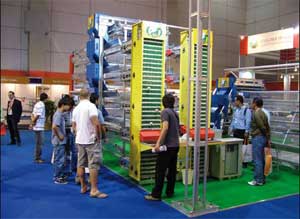
From 11-13 March, VIV Asia took place again in the Thai capital of Bangkok. The show was well received among visitors as well as the wide ray of international exhibitors, mostly coming from the US, Europe and Asia. Despite a temporary market slowdown, the show maintained its leading international reputation in South-East Asia, strongly supporting the steadily growing poultry business in this part of the world.
By Ad Bal
Over the years, VIV Asia has become Asia-Pacific’s greatest livestock product exhibition. This biannual show took place again for the ninth time. During the opening ceremony, attention was paid to the Asian livestock industry and the world economic crisis, as the event focused on the confidence to establish Thailand as the Asia-Pacific livestock hub.
Ton Otten, managing director for show organiser VNU Exhibitions Europe, said that the agricultural industry, especially the livestock sector, stands out despite the deterioration of worldwide economic circumstances. For the livestock sector he even sees an important role to restore the economy in a stable condition. Otten went on to say that the Bangkok show was a great opportunity for traders in the Asia-Pacific region to learn about new innovations and changing technologies for developing and enhancing their productivity and reducing their costs whilst maintaining production quality. VIV Asia again was a big event with 568 exhibitors from 41 countries. Of course, many of these exhibitors traditionally came from the US, Canada and European countries such as the Netherlands, Germany, Belgium, France, Italy and Spain. This year’s show also saw growing interest from Asian countries such as Korea, India and China.
Indeed the show seemed to be a success. Almost 21,000 visitors from no less than 115 countries came to the Bitec fairgrounds for VIV Asia. This was only 4% less than the previous edition, but it was better than the organisers had expected. This decrease in visitor numbers was mainly attributed to the number from Thailand. This clearly proved the growing international importance of the show. Out of the total number of visitors, 49% came from abroad, which is considerable. Both visitors and exhibitors were satisfied with the show. On a scale from 1 to 10, visitors awarded VIV Asia with 8.0 and exhibitors with 7.6.
Various speakers addressed the audience during the opening conference, among which was Veiverne Yuen and Jean-Yves Chow of Rabobank International in North-East Asia. They presented a clear analysis of current market conditions in Asia and elsewhere in the world, and also predicted long-term developments. Despite the current slowdown in the business, they trust that fundamentals are sound. They therefore forecast that in the long-term these fundamentals will drive continued growth. This is a good outlook that suppliers should be aware of!
Along with the show, several side symposiums were held. In particular, those related to the theme “eggs”. Sponsored seminars also took place on various topics.
“Eggs” was a leading theme at VIV Asia. Everything from breeding to egg handling and from housing techniques to hatchery matters was discussed during side seminars. Moreover, in a central display at the floor ground, information on companies that were supporting this project could be found. Many of these companies were positioned around this kind of meeting point. In ovo vaccination is a new field of business for Sanovo Staalkat. At VIV Asia the company launched their OptiVac in ovo vaccination entry level machine, which is meant for relatively small hatcheries. It is a manually operated machine with a capacity of up to 25,000 eggs per hour. The OptiVac can be configured to setter trays of Petersime, Pas Reform and Jamesway. A peristaltic pump delivers the vaccine. This is adjustable. After each injection every needle and punch are disinfected. A new device for vaccinating chickens between 12-19 weeks of age was developed by Desvac from France. This so-called Automatic IM allows for precise intra-muscular breast injection of layers and breeders. It shows similarities with their Dovac chick vaccination machine for hatcheries, but the application is clearly different. The machine can do single or double injections. The specially designed mould contains three detection points that must be activated in order to trigger the injection. This ensures correct positioning of the birds and guarantees the correct site of injection. As such, the Automatic IM is a valuable tool to increase the quality of IM injections. Each detection point is connected with a LED, giving direct visual confirmation of the status of the three detection points prior to injection. The machine also has a very minor risk of accidental vaccination to vaccination personnel. Capacity is 700-1,000 birds per hour. The new Synchro-Hatch from Petersime is a patented bio-response technology that synchronises the hatch profiles to the hatching process. It reduces the so-called “True Hatch Window”, in other words the time from first pipping until full hatch of all eggs. The system monitors the process and automatically detects the vital signals of the developing embryo, by means of sensors, allowing the system to generate the right environment for an optimal hatching process. Properly timed access to feed and water is essential for a healthy start in the life of the chick. With Synchro-Hatch, all chicks hatch within a short time frame and are perfectly timed for take off. Field trials have shown an increase of over 11% on the chick quality scoring system. Synchro-Hatch results in improved chick uniformity and quality as well as good hatchery performance in terms of hatchability and power consumption. It reduces the Hatch Window by up to 30% and concentrates the hatch much nearer to chick takeoff point. This results in great uniformity of hatch. A new easy-to-maintain drinking system was designed by PTN from New Zealand. The drinker line needs no support system. The cups are directly connected to the polyurethane tube, which is supporting itself. Attaching the cups is very easy my means of a simple click-on system without over-line clamps. That allows easy dismantling of the system for cleaning purposes or changing the cups for a different bird size. Several options are available from replacement of existing lines, to fully automated systems with no manual pressure regulators. The new Platinum single stage series incubators and hatchers of Jamesway offers two innovative features, a dehumidifier and adjustable fan speed. The dehumidifier is available for the incubator and removes excess moisture without letting in outside air. The variable speed fans are programmable. Depending upon the requirement during the incubation cycle, fan speed can be increased or decreased. Low energy motors only work when they need to work. Through its director Erich Erber, Austrian feed additive company Biomin officially launched two new products. First, the global launch of Mycofix Secure, the newest addition to the company’s Mycofix range of products to counter mycotoxin problems. It is a mycotoxin-binder, only usable if aflatoxins, FUM or Ergot are present in the feed, predominantly in tropical areas. Based on activated bentonite, the new product will bind in-feed mycotoxins when the feed is being digested by the animal. This way, otherwise harmless mycotoxins are excreted without causing damage. The new PoultryStar product saw its soft launch at IPE in Atlanta in January. Asia is now introduced to this multi-strain probiotic, and it is hoped that registration in Europe will be finished by the end of this year. The probiotic is aimed at creating a better microflora in young birds and newly hatched chicks to protect them against colonisation by harmful bacteria. |
Join 31,000+ subscribers
Subscribe to our newsletter to stay updated about all the need-to-know content in the poultry sector, three times a week. Beheer
Beheer

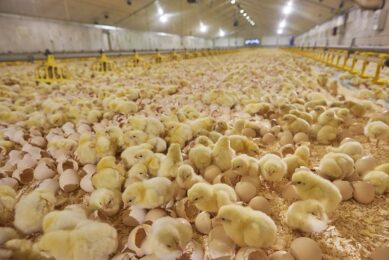
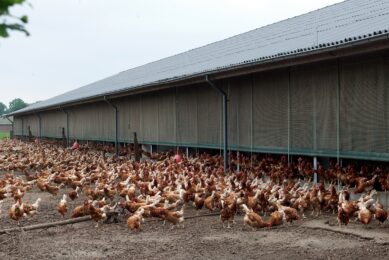
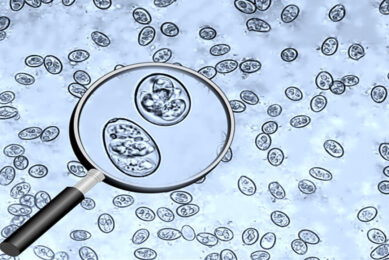
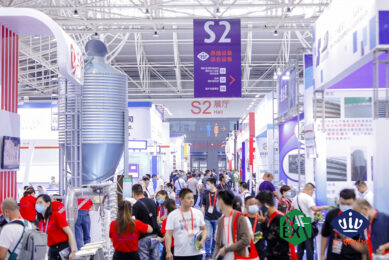



 WP Admin
WP Admin  Bewerk bericht
Bewerk bericht